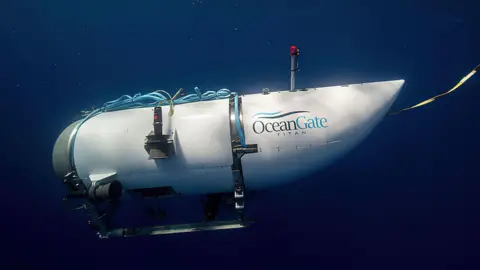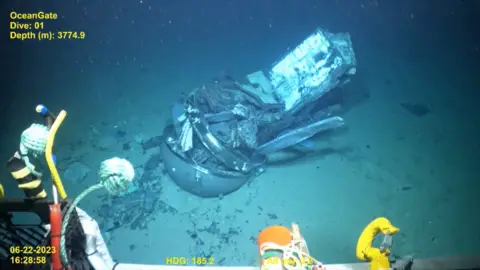Here’s what you missed from week one

The U.S. Coast Guard spent a week collecting testimonies from people close to the Titan submersible that imploded last June, killing all five people on board.
Investigators are seeking to uncover details of what led to the tragedy and come up with recommendations that could prevent future deadly trips.
The Titan, operated by OceanGate, imploded less than two hours into its descent during a dive toward the wreck of the Titanic.
The accident raised questions about the safety and design of the submersible, as well as the materials used in its construction.
Here are five takeaways from the first of two weeks of hearings:
1. Last words from the crew: “Everything is fine here”
U.S. Coast Guard investigators have revealed one of the Latest Crew Messages before losing contact with a ship over the water: “Everything is fine here.”
The hearing revealed further text messages between Titan and its mother ship as the ocean-going vessel began its journey to the seabed to see the iconic British ocean liner which sank in 1912.
Support personnel aboard the surface ship asked about the depth and weight of the submersible.
According to investigators, communications were difficult throughout the raid.
About an hour into the dive, the Titan sent a message at a depth of 3,346 m indicating that this was its last dive. The crew announced that they had dropped two weights.
Then the communication was lost.
 Source: Reuters/AFP
Source: Reuters/AFP2. Witness recalls last sight of Titan crew: ‘Five smiling people’
Mission Specialist Renata Rojas, who volunteered on the doomed voyage, testified to the U.S. Coast Guard about her interaction with the crew before the submarine sank.
At some point, Mrs. Rojas cried while recalling “five smiling people” before boarding the Titan and heading underwater.
“They were just happy to leave, that’s my memory of it,” she said.
She remembers losing communication and asking her colleagues: “We haven’t heard from them, where are they?”
Ms Rojas, who previously visited the Titanic wreck with OceanGate, admitted that the Titan submersible was neither classified nor registered.
“I knew that diving into the Titanic was risky, but I never felt in danger,” she said at the hearing.
 American Photographic Archives
American Photographic Archives3. The whistleblower: the tragedy was “inevitable”
Former OceanGate COO David Lochridge testified to U.S. Coast Guard investigators that He warned of potential security concerns before being fired in 2018.
He claimed to have been ignored.
Mr Lochridge said he believed the fatal incident with the Titan was “inevitable” because the company had “bent” standard rules.
He was fired and sued by OceanGate for revealing confidential information, and he countersued for wrongful termination.
US court documents show Mr Lochridge had significant concerns about the Titan’s design, including that it was made from carbon fibre, which he said would damage it further with each dive.
He told U.S. Coast Guard investigators that the “general idea” of OceanGate was to “make money.”
“There was very little in the way of science,” he said.
4. New images reveal the wreckage of the Titan
The U.S. Coast Guard has released new images showing the wreck of the Titan submarine on the sea floor.
The ocean-going vessel is seen with the “OceanGate” logo on its side as debris is strewn around it.
The ship’s tail can also be spotted among the wreckage, along with cables, gauges and electronics from the submersible.
A remote-controlled vehicle obtained the images.
 Reuters
Reuters5. First submersible manufacturer: Titan was “not ready for the general public”
Patrick Lahey, co-founder and CEO of leading submersible maker Triton, told investigators he was not impressed with the Titan submersible.
Mr. Lahey’s company makes submersibles that go to the deepest points of the ocean.
Although not mandatory, he stressed the importance of certifying submersible vessels through a process involving a thorough safety assessment carried out by independent maritime organisations.
Mr Lahey told the panel there was no reason why the Titan submersible could not be certified.
He visited the Titan submarine that later imploded while on holiday in the Bahamas and said he was “not particularly impressed” by what he saw.
“It seemed to me that a lot of things weren’t quite ready for prime time,” he added, saying he had raised his concerns with OceanGate.
Mr Lahey added that the ship did not appear “particularly well thought out”.
“It just looked amateurish in its execution,” he said.





